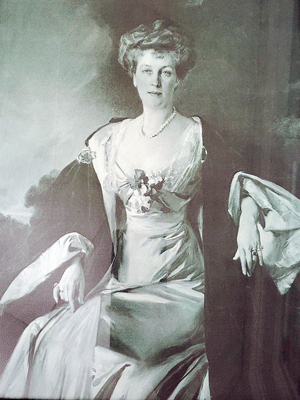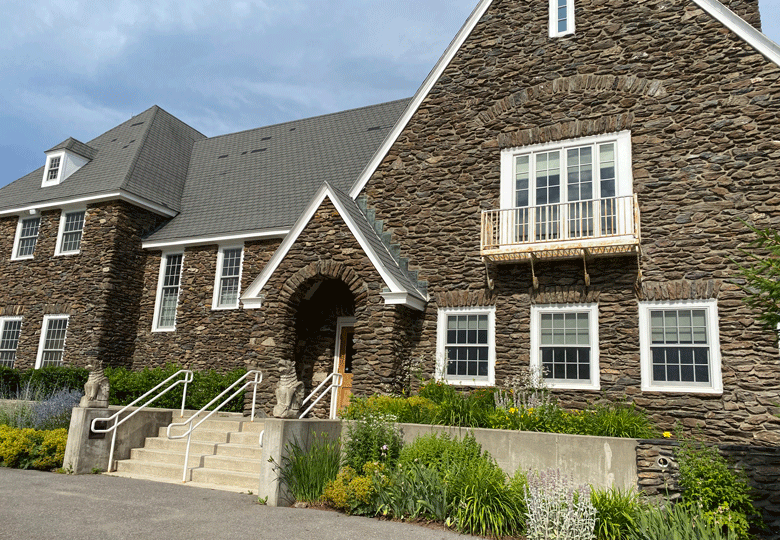Editor’s note: This story first appeared in The Working Waterfront in 2003. It also is included in a collection of Oldham’s stories, Getting Here from There: Life Stories from a Maine Island Community (2020).
Perhaps due to their remoteness and resultant romantic allure, islands possess an air of mystery that’s always made me suspect that islanders must have scores of stories to tell of haunted houses and other paranormal phenomena. Islesboro, for instance, has no shortage of intriguing tales of ghostly presences and mysterious places where, on nightly strolls, one finds oneself walking very quickly indeed.
Unexplained floating lights, spectral apparitions, tangibly unsettling atmosphere, and eerie echoes are but a few of the sights, sounds, and sensations that more than one islander has experienced over the years.
Some of Islesboro’s spirits associate themselves strongly with certain places, such as Stephen’s Field, with its Headless Horseman legend. For generations, young people have walked there at night with trepidation, dreading to hear the sound of horses’ hooves echoing across the Narrows. Filmy figures have been spotted taking an evening stroll through the up-island cemetery, and the Bluff (supposedly the site of an ancient Indian burial ground) is said to be visited by mysterious groupings of red lights hovering over houses, visible from the water. Many islanders also report seeing floating red lights frequently in the woods.
In 1926, Mrs. Atterbury built the last major Islesboro summer cottage of the pre-Depression era…
Often when opening up summer cottages, island caretakers and housekeepers have noticed hard-to-explain phenomena. Many island women have gotten into the habit of announcing their presence upon entering a cottage with a cheery “I’m here! It’s just little ole’ me… I’ll do my job and be gone in a jiffy.” They still report a certain creepy “hair-standing-on-end” feeling, hearing footsteps and thumps, doors slamming, toilets flushing by themselves.
Most have learned to accept these ghostly manifestations as part of the territory. Some caretakers “feel” the presence of someone following them around as they check out the house, sometimes actually catching sight of ghostly figures out of the corner of an eye.
While chopping wood one evening, one caretaker felt a presence in the woods intently watching him and glanced up in time to see an apparition dressed in a long, black coat. The specter promptly vanished into thin air, causing the caretaker to call it quits for the day.
Certain houses on Islesboro have been the scene of consistent sightings of ghosts. These hauntings can sometimes affect the physical environment, causing doors and cupboards to be opened by themselves, furniture to be moved about, and objects to disappear and reappear in different locations. The Grindle Point lighthouse ghost is famous for “apports” (objects transported by unknown means) moving from one room to another. At one Hewes Point cottage, several renters have seen a pair of mischievous children giggling about the place. At another rental home, a little girl with a large bow in her hair has been sighted repeatedly, happily swinging on a tire swing in a tree.
One up-island summer cottage ghost seems to be partial to music, judging by the radios that seem to turn themselves on in various parts of the house. At this particular cottage, a nanny was awakened early one morning by the sound of music mingled with her charge’s baby voice delightedly talking to an unseen presence.
MRS. ATTERBURY
Sifting through stories of Islesboro hauntings, one island residence stands out as having seen over 50 years of unexplained phenomena—the former Rock Ledge cottage, now the Islesboro Central School building, which is reputed to be haunted by its former owner, Mrs. John T. Atterbury.

In 1926, Mrs. Atterbury built the last major Islesboro summer cottage of the pre-Depression era, according to The Summer Cottages of Islesboro by Earle G. Shettleworth, Jr. She had an eclectic, stone, English-style house built, with a large cross gable dividing the main house from the service wing. The walls are constructed of on-site ledge stone, generated by blasting for the building’s foundation, which is where the cottage got the name “Stone Ledge.”
A later owner, Mrs. Lillian S. Whitmarsh, donated Stone Ledge cottage to the town of Islesboro in 1952, to be remodeled and used as a consolidated school. On Dec. 26 of that year, island residents voted to accept this gift as “the most wonderful Christmas gift we ever had.”
Anna Robins Atterbury was born in New York City in 1865 and married New York broker John Turner (her second husband) in 1903. He passed away in 1912, but Mrs. Atterbury remained a prominent figure in New York and Dark Harbor social circles until her death in 1939. According to Lisa Satshfield, whose daughter’s great grandmother, Maybelle Boardman, worked for Mrs. Atterbury as a laundress, Mrs. Atterbury was a kind and generous person, especially to children.
Anna Robins’ father was one of Islesboro’s first summer residents, and among her descendants were summer residents the Ladds, the Gillies, and the Bradleys. Almost as soon as Rock Ledge cottage began to be used as a school, staff, students, and community members began to notice a resident Islesboro Central School ghost, reputed right from the start to be Mrs. Atterbury.
Former students tell of paintings that were frequently moved around, footsteps heard in the attic, and lights turned on and off when no one was around.
One alumna, a high school student during the 1970s, recalls that her crowd would often return home from dinner at the harbor hamburger shop by way of a slight detour by the school, just to scare each other. Although they never tried to enter the building, they would on occasion see dim lights moving from window to window.
Former students tell of paintings that were frequently moved around, footsteps heard in the attic…
Since no cars were visible in the parking lot at those times, the students would get thoroughly spooked, running as fast as they could down the back slope of the school to get away.
On a particularly eerie night, they swear they saw a ghostly manifestation in the school’s French door window. Was it Mrs. Atterbury watching them, or just the reflection of night clouds in a full moon?
Among present school personnel, opinions, experiences, and sightings run the gamut from skepticism to nervous belief. One teacher says it’s an interesting myth, but that he, personally, despite being there every hour of the day and night, has never seen, heard, or felt anything in all the years he’s worked at the school. Several other staff members, however, report actual sightings of Mrs. Atterbury in the “flesh.”
There are many consistent features to these close encounters with Mrs. Atterbury. Almost all of them have occurred between the hours of 8:30 and 10:30 p.m. Personnel alone in the building at night frequently feel strongly that they’re not alone, accompanied by that “hair-standing-on-end” feeling.
Footsteps can be heard in the attic and up the stairs, along with isolated pockets of extreme cold, banging, closing and opening of doors, and lights being turned on and off by themselves in the school’s hallways. The rattling of lockers is another common manifestation. Less common occurrences include a basketball mysteriously bouncing itself across the gymnasium floor, and a ghostly tap on the shoulder.
Most everyone who enters the building at night (later unlocking the door and punching in a code, as required by the school’s new security system) sheepishly admits to talking to Mrs. Atterbury, reassuring her that they “Won’t be but a moment,” or “Just coming in to do a little work, you don’t mind, do you?”
Apparently, Mrs. Atterbury sometimes likes to do a little research herself, on several occasions having turned on computers when no one else was there. Even with these appeals to Mrs. Atterbury for tolerance, people have been known to flee the building because they were just too “creeped out.” But for the most part, people just close their doors and get done what they have to do as quickly as possible.
Those who have seen Mrs. Atterbury describe her as being dressed in an old-fashioned manner in a white, flowing sort of nightgown. She wears her white hair in a bun, carries a candle and sconce, and—there are discrepancies among the sightings—is either stout or tall and willowy. Almost without exception people who have actually encountered her in the “flesh” report having no fear, finding her presence to be a friendly one.
Perhaps the brevity of their contact was a factor; since she was gone, literally, in the blink of an eye, they had hardly any time to react.
What could Mrs. Atterbury be doing at that particular time of night? Several theories are offered—she’s patrolling the house before locking up for the evening; she’s checking for an intruder before going to bed; she’s looking for a wayward servant who hasn’t answered her call bell; or (my personal favorite) she’s searching for her lover, who’s supposed to occupy a room adjacent to her bedroom.
Whatever the reason, let’s hope she remains the friendly, nurturing presence people have found her to be and—personally speaking—let’s hope she doesn’t take exception to anything in this article.





